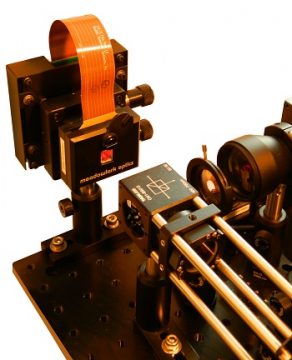 Spatial light modulators (SLM) are a hot topic in the field of 2-photon laser scanning microscopy. Neuroscientists have been searching for a method to stimulate multiple neurons simultaneously in awake animals and SLMs may be the answer. SLMs use the principles of holography to shape the wave front of a laser pulse to produce 2D or 3D patterns. This can be ideal for producing multiple targeted photostimulation spots aimed at simultaneous stimulation of several neurons. Ultimately the number of neurons that can be activated depends on a variety of factors the most important being the amount of laser power available.
Spatial light modulators (SLM) are a hot topic in the field of 2-photon laser scanning microscopy. Neuroscientists have been searching for a method to stimulate multiple neurons simultaneously in awake animals and SLMs may be the answer. SLMs use the principles of holography to shape the wave front of a laser pulse to produce 2D or 3D patterns. This can be ideal for producing multiple targeted photostimulation spots aimed at simultaneous stimulation of several neurons. Ultimately the number of neurons that can be activated depends on a variety of factors the most important being the amount of laser power available.
In 2016, Vidrio added SLM control features to ScanImage so that microscopists can utilize these versatile devices. ScanImage supports two types of SLM devices, ones that act as simple displays using a DVI interface and Meadowlark SLMs that uses a PCIe interface. Three of the main features now available in ScanImage include a function to achieve precise alignment between the imaging and SLM paths, the capability to produce multiple photostimulation patterns in 3D, and coupling the SLM to a galvo mirror pair to extend the SLMs addressable field of view. In 2017 Vidrio will continue to enhance SLM support in ScanImage to extend the use of these devices in 2-photon imaging experiments.
If you are considering adding an SLM to your imaging system there are several factors that you should be aware of. First, the scan angle of an SLM is fairly limited (single digit degrees) and thus coupling your SLM with a galvo pair is highly recommended. Second, SLM devices differ in resolution and the time required to switch between phase masks. Right now DVI based devices are limited to a 60Hz refresh rate but these devices are also typically higher resolution. Lastly, no matter what phase mask is sent to the SLM device, you will always have to deal with a zero order beam spot. Nikolenko et. al. describe using a zero order beam blocking technique while others keep the zero order beam spot out of the imaging focal volume.
